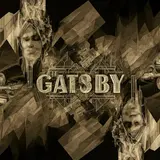
Roaring Twenties Reads

When we think of the 1920s, images of flappers, Prohibition, and the world of The Great Gatsby often come to mind. As William A. Everett notes in the Wall Street Journal:
The Great Gatsby has a sweeping sense of nostalgia for an imagined past that keeps the book alive and popular a century after it was published. Much of the novel’s action takes place on Long Island, N.Y., a locus of Jazz Age culture. F. Scott Fitzgerald fills his story with many references to the defining aspects of the 1920s: Jordan Baker is a lady golfer; Daisy and Gatsby dance a foxtrot (“I remember being surprised by his graceful, conservative fox-trot,” writes our narrator); and Gatsby is, among other things, an alleged bootlegger. This spirited novel explores the complicated relationships between the past and the present, between appearances and reality, and the tragedies that result when they collide.
Everett recommends four other essential books that capture the essence of the Roaring Twenties, which are less known than Fitzgerald’s iconic novel. Everett delves into classic literature like The Inimitable Jeeves by P.G. Wodehouse, which offers a humorous take on British society, but he also sheds light on lesser-known works like The Gift of Black Folk by W.E.B. Du Bois, which provides a poignant perspective on the experiences of Black Americans during the era. Additionally, he recommends The Seven Lively Arts by Gilbert Seldes, a celebration of popular culture and its impact on society, along with Passing by Nella Larsen, a novel that delves into the complexities of racial identity and the challenges faced by Black women in the 1920s.
The Roaring Twenties was a time of unprecedented economic prosperity, with the nation's wealth more than doubling between 1920 and 1929. With this came enormous cultural shifts that are worth exploring in order to better understand the era and its impact.